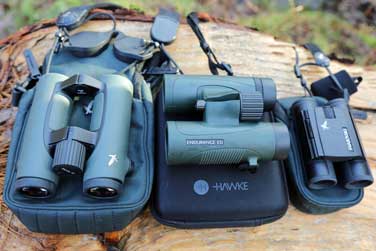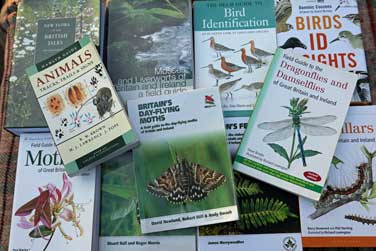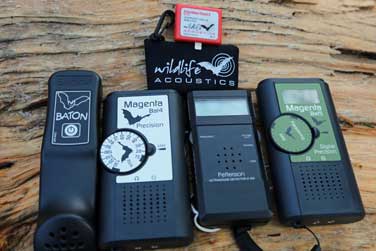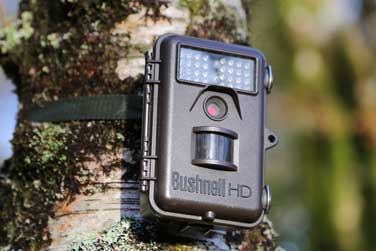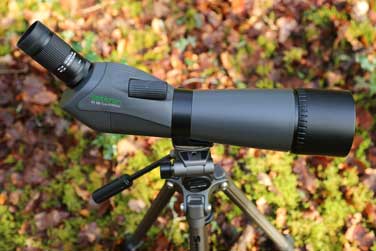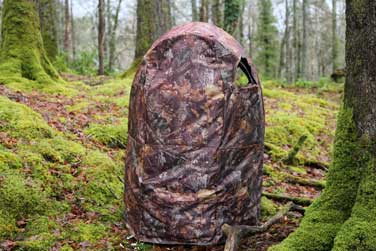Scopes and Tripods
If you are serious about wildlife watching, it might be worth considering acquiring a spotting scope or telescope. Scopes offer a much higher magnification than binoculars and are an excellent choice for birding from wildlife hides. They provide great viewing opportunities for watching waders on mudflats, waterfowl on lochs and high flyers on cliffs and hill tops. Scopes can also be used for photography (digiscoping), with the facility to attach a digital camera to the eyepiece of the scope; this is a great feature if you are interested in photographing wildlife at a distant. However, good scopes can be expensive and it is important to select a scope that is suitable to your purposes including target species, carry weight, preferred set-up, optical requirements and budget.
If you are buying a scope you should also consider investing in a good sturdy tripod; this will allow you to get the best out of your scope.
Size and Magnification
Scopes vary in size and magnification so it is important to think about how you intend to use your scope and the magnification required. For most uses, a 60 mm telescope with a wide angled x 20 eyepiece may be sufficient, giving you a good field of view and the flexibility of viewing in a hide or out in the field. The magnification range can be extended further by opting for additional eyepieces, such as x 30 and x40.
If you are planning to go wildlife spotting in a range of light conditions, it may be worth considering a slightly larger scope with a 80mm or 85mm objective lens. A larger lens lets in more light giving a much more detailed image; the larger models can also support a much higher magnification range of up to x 60 or x70 depending on the scope.
Larger scopes are inevitably more bulky which may restrict how you use your scope. Weight and size can be critical if you intend to go birding 'on the move' or need to walk some distance to your observation site. If your scope is too heavy or cumbersome you may find that is left behind, potentially depriving you of some great birding encounters. Larger scopes may be more suited for observing from fixed positions such as in a hide (using a shelf or bench for anchorage) or with a sturdy tripod. However, scopes of similar dimension can vary in weight according to their construction specifications and a comfortable carry weight can depend on many factors.
If you are looking for a portable scope, there are some small lightweight models on the market which are well worth considering. However, the relatively small size of the objective lens will reduce both light transmission and the field of view, to a greater or lesser extent, depending on the objective lens size and the quality of the optics.
Position of Eyepiece
Another feature to consider when selecting a suitable scope is whether to opt for a straight or angled scope. In a straight scope the eyepiece is in line with the body position of the scope; in the angled scope the eye piece is at 45º angle. An angled scope is ideal for watching birds on the move and is generally easier to look through when standing and using a tripod, whilst a straight scope is more suitable for using in a seated position in hide. Some models also offer binocular viewing options. The position of the eyepiece is matter of choice and you should find that your 'birding style' will adapt to whatever option you choose.
Quality of optics
As with binoculars, one of the most important features to consider is the quality of the optics. Scopes with low-dispersion (ED) or fluorite glass give the best optical performance. High quality optics will inevitably cost more but it is well worth making that investment if you looking for a scope to last you a lifetime.
Weather-proof
If you plan to use your scope out in the field, you will need to consider its weather robustness of your scope. It is also well worth considering purchasing a padded scope case for your spotting scope (if not included) to provide further protection from weather and damage.
The Swarovski ATX/STX/BTX Modular Spotting Scope
If you are looking for an innovative and highly versatile spotting scope, then Swarovski is the one to look out for. Swarovski has introduced a modular set up for their scopes, which allows the user to mix and match ocular and objective modules to produce the perfect combination or combinations for you. This new modular scope system features the excellent optics of Swarovski, with high zoom range and a wide field of view, combined with a lightweight aluminium housing and waist band focussing. There is a choice of three eyepiece modules (straight (STX), angular (ATX) and binocular (BTX)), two magnification ranges (25-60 and 30-70) and four objective lens diameters (65mm-115mm) that can be flexibly combined.
The ATX and STX are zoom eyepieces offering a magnification range of 25-60x when combined with the 65 mm and 85 mm objective lenses, and a range of 30-70x when combined with the larger objective lenses. The BTX is a fixed lens offering between x30 and x35 magnification dependent on diameter of the objective lens.
The objective lens have been designed to suit a range of needs and viewing possibilities. The compact 65mm objective lens is lightweight and designed specifically with the traveller in mind, whilst the 85mm lens is a good all rounder lens. The other two objectives are more for the specialist. The 95mm lens is ideal where high magnification and excellent resolution are required and the massive x 115 mm lens is pitched for maximum magnification and resolution at a range of light intensities. The size and weight of scope inevitably increases as the objective lens increases in size. However, by purchasing more than more objective lens, you have the option to select a scope combination suitable for your intended purposes on a particular day. What a fantastic feature!
The Swarovski Modular Spotting Scope is also an excellent scope if you are interested in digiscoping combining sharp focussing with digiscoping adaptors to fit a range of camera types, including smart phones. The Swarovski ATX/STX Modular Spotting Scope is, arguably, one of the best scope systems one the market today and one that is on my wish list. This is a scope for the real enthusiast who wants to invest in the best for a lifetime's use. In addition, the modular scope system offers the ability to personalise a scope to match your changing needs: an amazing scope system with a multitude of possibilities.....
Product Links and Further Information
Swarovski Optik BTX 35x95 Spotting Scope Set
Swarovski ATX 30-70x95 Spotting Scope Set
Other Scopes
If you are interested in a more affordable scope you might like to consider the some of the spotting scopes offered by Celestron. Celestron produce scopes for a wide range of purposes and offers a good selection of spotting scopes, including a small traveller scope. Celestron have a reputation for good quality products at affordable prices.
Another brand well worth considering is Hawke. The Hawke Nature Trek 20-60x80 Spotting Scope is a fairly lightweight and robust scope, offering a good optical performance with a good focal range. It is digiscope compatible and features full body rotation. The Hawke Nature Trek 20-60x80 Spotting Scope can be considered as a good all rounder and is well worth a closer look. You might also consider the compact 60mm Opticron 40165 Adventurer II, with 15-45x zoom.
Product Links and Further Information
Celestron 52304 Regal M2 65ED Spotting Scope
Celestron 52252 100 mm Ultima Spotting Scope 45 Degrees
Celestron 52332 TrailSeeker 80-45 Degree Spotting Scope – Black
Celestron 52308 9-27 x 56 mm Hummingbird ED Micro Spotter Birder-Friendly Spotting Scope - Black
Hawke Nature-Trek 20-60x80 Spotting Scope
Opticron 40165 Adventurer II WP 15-45x60/45 Spotting Scope, Black
We hope you find a suitable scope for your needs and budget and have many fruitful years observing the wildlife in your local area and beyond.
Tripods
It is well worth investing in a good tripod for your scope and trail camera . Features to consider when choosing a suitable tripod include extendable height, construction material, weight, head type (pan or ball head), stability and ease of operation. The importance of such features will depend on your intended use.
Our top picks for general use are:
Standard size tripods suitable for scopes and trail cameras
Product Links and Further Information
Celestron 82050 Trailseeker with Fluid Pan Head Tripod - Black
Manfrotto 190XPRO Aluminium 3 Section Tripod with Horizontal Column
Velbon Sherpa 400 Aluminium Tripod with PHD-65D 3-Way Panhead
Small tripods suitable for trail cameras.
You can either opt for a small portable version of a standard tripod or go for compact flexible tripod. For both types ball attachments heads can be really useful. We are a great fan of the Joby GorillaPod, which is highly versatile tripod available in a range of sizes. The larger and sturdier versions are best for trail cameras, fitted with the optional ball head for full rotation capacity. The gorilla tripod is excellent for use on rough and uneven terrain, as well as offering wrap round facility for a multitude of surface attachments.







